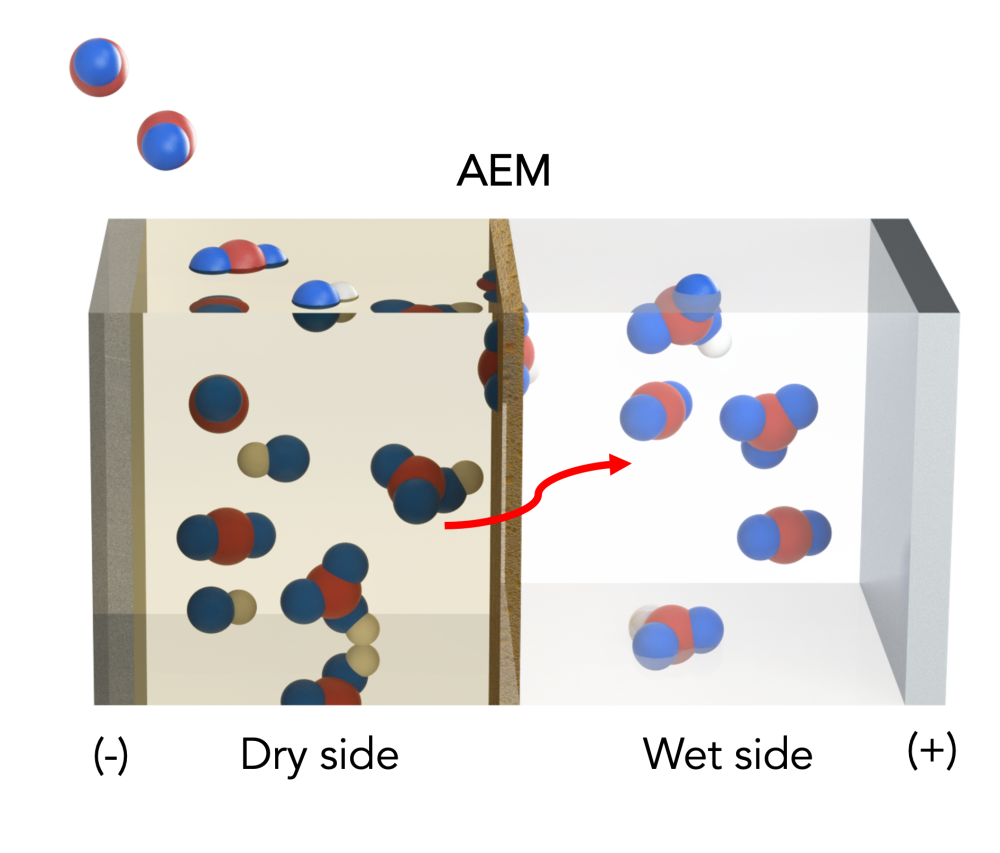Recreating the process of natural photosynthesis in which plants turn sunlight, water and carbon dioxide into energy is a long-pursued goal in science. Often described as an “artificial leaf,” these systems could play a key role in the fight against climate change, and a team of engineers has just picked up the pace with a solution that captures carbon dioxide at 100 times the rate of current technologies.
We have looked at quite a number of artificial leaf systems over the years that use sunlight to turn water into liquid fuels and electricity. One interesting example came from engineers at the University of Illinois Chicago (UIC) in 2019. It had a unique design the creators say made it suitable for use in the real world, unlike other laboratory solutions that could only work with carbon dioxide from pressurized tanks.
The solution consisted of a standard artificial photosynthesis unit that was encased in a transparent capsule filled with water, and featured a semi-permeable outer layer. As sunlight struck the device, the water evaporated through the pores in the outer layer and carbon dioxide was drawn in to replace it, where the unit inside turned it into carbon monoxide. This CO could in turn be captured and used to make synthetic fuels.
Through some key tweaks to the design, the scientists have now taken its performance to new heights. The team used inexpensive materials to integrate an electrically charged membrane that acts as a water gradient, with both a dry and wet side. On the dry side an organic solvent attaches to the captured carbon dioxide and turns it into concentrated bicarbonate, which builds up on the membrane.
A positively charged electrode on the wet side then draws the bicarbonate across the membrane and into the watery solution, where it is converted back into carbon dioxide to make fuels or in other applications. Altering the electrical charge can speed up or slow down the rate of carbon capture, which the scientist found at its optimum could capture 3.3 millimoles per hour for each four square centimeters (0.6 sq in) of material.

Aditya Prajapati/UIC
This “flux rate” is described as very high, and more than 100 times better than existing systems. Importantly, only a negligible amount of energy was required to power the reactions, at 0.4 kilojoules per hour, less than what it takes to run a one-watt LED lightbulb. Equally impressive, the team says the system can capture carbon dioxide at a price of US$145 a ton, which is within the Department of Energy’s guidelines that these technologies should cost $200 per ton or less.
“Our artificial leaf system can be deployed outside the lab, where it has the potential to play a significant role in reducing greenhouse gases in the atmosphere thanks to its high rate of carbon capture, relatively low cost and moderate energy, even when compared to the best lab-based systems,” said Meenesh Singh, assistant professor of chemical engineering in the UIC College of Engineering and corresponding author on the paper.
The device is small enough to fit in a backpack and is modular by nature, meaning multiple units can potentially be stacked on top of one another to build out devices suited for different settings.
“It’s particularly exciting that this real-world application of an electrodialysis-driven artificial leaf had a high flux with a small, modular surface area,” Singh said. “This means that it has the potential to be stackable, the modules can be added or subtracted to more perfectly fit the need and affordably used in homes and classrooms, not just among profitable industrial organizations. A small module of the size of a home humidifier can remove greater than 1 kg of CO2 per day, and four industrial electrodialysis stacks can capture greater than 300 kg of CO2 per hour from flue gas.”
The research was published in the journal Energy & Environmental Science.
Source: University of Illinois Chicago
Source of Article